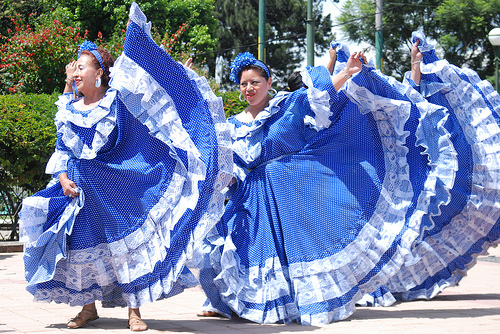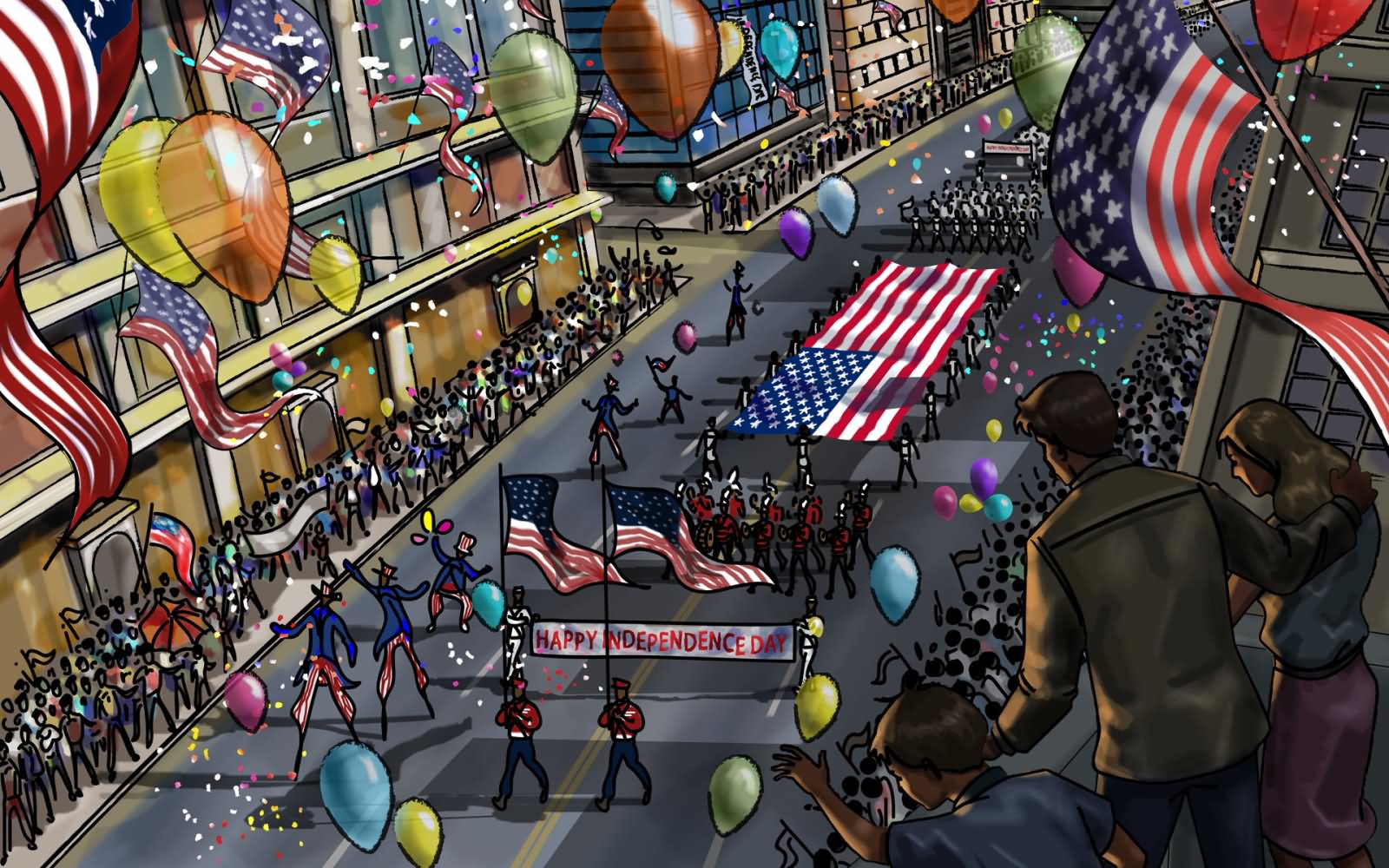Celebrating Independence: Comparing and Contrasting America and Honduras
John Adams, a
member of the continental congress said in a letter to his wife in 1776, Independence
Day “ought to be solemnized with pomp and parade, with shews, games, sports,
guns, bells, bonfires, and illuminations from one end of this continent to the
other from the time forward forever more.”[1] Three
centuries later, American has not forgotten this prophecy, for I have
experienced the zeal, the patriotic fervor, first hand.
It’s the same
story every year: My mother shakes all of us awake at the crack of dawn on the
4th of July[2], we
scramble, groggily, to get ready for the day (clad in all red, white and blue,
of course), and we squeeze into the minivan, zooming off to the Lake Tahoe town
square. The town parade is a spectacle: candy being tossed like confetti,
children devouring corn dogs, country music twanging away, lawn chairs
sprinkled across the streets, blueberry pancakes being flipped on steaming
grills. The air smells like dough, like sweet syrup, like faint diesel oil…
like freedom.
Lake Tahoe parade
Below North America, perches Central America, where 155 million people celebrate their independence from Spanish colonialism over the course of one weekend.[3] The Honduras, in particular, celebrates its independence with Guatemala, El Salvador, Nicaragua and Costa Rica on September 15th.[4] The occasion brings together individuals of all languages: Hondurans, Pech, Garífuna, Maya Chortí, Lenca, Tol, Miskitu, Spanish and English, the varying skin colors, cultures, and traditions that are the hallmark of Honduran society.

Map of central America
Celebrations pervade the country, from urban to rural landscapes, from historical landmarks like Comayagua and Tegucigalpa, to San Pedro Sula, the industrial capital of the country.[5] The celebrations include students marching down the streets with the flag[6], schools and colleges remain closed to participate in celebrations and the national anthem blaring in every public space. The celebration at Tegucigalpa is considered the most prominent, as it has the presence of the President, the highest officials, as well as visiting members of nations friendly to the Honduras. The ceremony at Tegucigalpa National Stadium indulges 40,000 citizens in parades, bands, cheerleaders, the philharmonic orchestra, planes, helicopters and paratroopers.

Celebrations in Honduras
The stark contrast I have concluded from experiencing Independence Day celebrations in the United States and reading about celebrations in Honduras is impregnated in the nature of the celebrations themselves. From my experience in the US, the Fourth of July is seen as a pompous day of celebrations with no inhibitions: it is a party the entire nation indulges in together. In the US, the patriotism materializes in a very capitalistic way, with parades being used as advertisement measures, and patriotism being expressed through extreme merrymaking and over-indulgence. I don’t sense the same nature of celebration in Honduran culture, with the occasion being portrayed as much more solemn and orderly. As much “fun” as it may be, I do believe that somewhere along the line American parades forget to capture and portray the “struggle” for independence, while this fact seems very potent in Honduran celebrations.

Advertisements everywhere!
Below North America, perches Central America, where 155 million people celebrate their independence from Spanish colonialism over the course of one weekend.[3] The Honduras, in particular, celebrates its independence with Guatemala, El Salvador, Nicaragua and Costa Rica on September 15th.[4] The occasion brings together individuals of all languages: Hondurans, Pech, Garífuna, Maya Chortí, Lenca, Tol, Miskitu, Spanish and English, the varying skin colors, cultures, and traditions that are the hallmark of Honduran society.

Map of central America
Celebrations pervade the country, from urban to rural landscapes, from historical landmarks like Comayagua and Tegucigalpa, to San Pedro Sula, the industrial capital of the country.[5] The celebrations include students marching down the streets with the flag[6], schools and colleges remain closed to participate in celebrations and the national anthem blaring in every public space. The celebration at Tegucigalpa is considered the most prominent, as it has the presence of the President, the highest officials, as well as visiting members of nations friendly to the Honduras. The ceremony at Tegucigalpa National Stadium indulges 40,000 citizens in parades, bands, cheerleaders, the philharmonic orchestra, planes, helicopters and paratroopers.

Celebrations in Honduras
The stark contrast I have concluded from experiencing Independence Day celebrations in the United States and reading about celebrations in Honduras is impregnated in the nature of the celebrations themselves. From my experience in the US, the Fourth of July is seen as a pompous day of celebrations with no inhibitions: it is a party the entire nation indulges in together. In the US, the patriotism materializes in a very capitalistic way, with parades being used as advertisement measures, and patriotism being expressed through extreme merrymaking and over-indulgence. I don’t sense the same nature of celebration in Honduran culture, with the occasion being portrayed as much more solemn and orderly. As much “fun” as it may be, I do believe that somewhere along the line American parades forget to capture and portray the “struggle” for independence, while this fact seems very potent in Honduran celebrations.

Advertisements everywhere!
In researching Honduras, I was very surprised by the ethnic and linguistic
diversity in such a small country, and that made me consider the similarity
that the independence celebration truly does bind cultures together within
their countries. The parades I’ve witnessed over the years in the US bring
together individuals from all walks of life… blacks, whites, Hispanics,
cowboys, students, the elderly, etc., which is the same way the Hondurans
celebrate their independence.


I think Hondurans may be surprised
by the attitude of American on the 4th of July, for I was too. The
extreme contrast between the way the two cultures perceive the occasion, and
the way their patriotism manifests is starkly different, which may definitely
be perplexing for both cultures looking upon the other. I believe these differences are born from the
economic and cultural difference in both the societies… for American society
indulges the epitome of capitalism, while Honduran culture seems more connected
with their cultural roots in their celebrations.
[1] Heintze, James R. "When in the
Course of Human Events It Became Necessary to Celebrate July 4Th." Phi Kappa Phi Forum, vol. 89, no. 2, Summer2009, pp. 4-6. EBSCOhost, search.ebscohost.com/login.aspx?direct=true&db=ehh&AN=44254043&site=ehost-live.
[2] Casiano, Louis Jr. "Patriotic Spirit
Resonates in Orange County July 4Th Celebrations." Orange County Register, the (Santa Ana, CA), 05 July 2016. EBSCOhost,
search.ebscohost.com/login.aspx?direct=true&db=n5h&AN=2W61406353610&site=ehost-live.
[3]
Brown, Sarah, and Stina Backer.
“Parties, Piñatas and Penguins: Independence Day, Central America Style.” CNN,
Cable News Network, 13 Sept. 2013,
edition.cnn.com/2013/09/13/world/parties-piatas-and-penguins/index.html.
[4] “Honduras.” Wikipedia,
Wikimedia Foundation, 18 Sept. 2017, es.wikipedia.org/wiki/Honduras.
[6]
Dupuis, John. “Honduras
Independence Day.” Honduras Travel, 14 Sept. 2016,
www.hondurastravel.com/honduras-history/honduras-independence-day/.

Comments
Post a Comment